Could Trump's tariffs bring back the Pacific Northwest lumberjack?

Could President Donald Trump's strategies help revive Washington's diminished timber industry?
For nearly a century, Washington’s timber industry produced everything from paper and two-by-fours to the massive wood beams that hold up the Tacoma Dome. Lumber mills were the backbone of logging towns throughout the Northwest.
But the industry has been on a long decline since the 1990s. Now, Trump wants to reduce foreign competition and increase U.S. logging to bring back those jobs.
To find out whether it could work, KUOW's Booming podcast visited a sawmill in Morton, a small town in the foothills of Mount Rainier.
The timber industry is not immune from layoffs. In June, a plywood mill along the Columbia River closed and laid off all of its workers. And another one is laying off 112 people.
Sponsored
Those layoffs are part of this bigger trend that’s been happening for decades.
Today, the state has about 100,000 timber-related jobs, including mills. That means Washington has lost about a quarter of its timber jobs in the last thirty years.
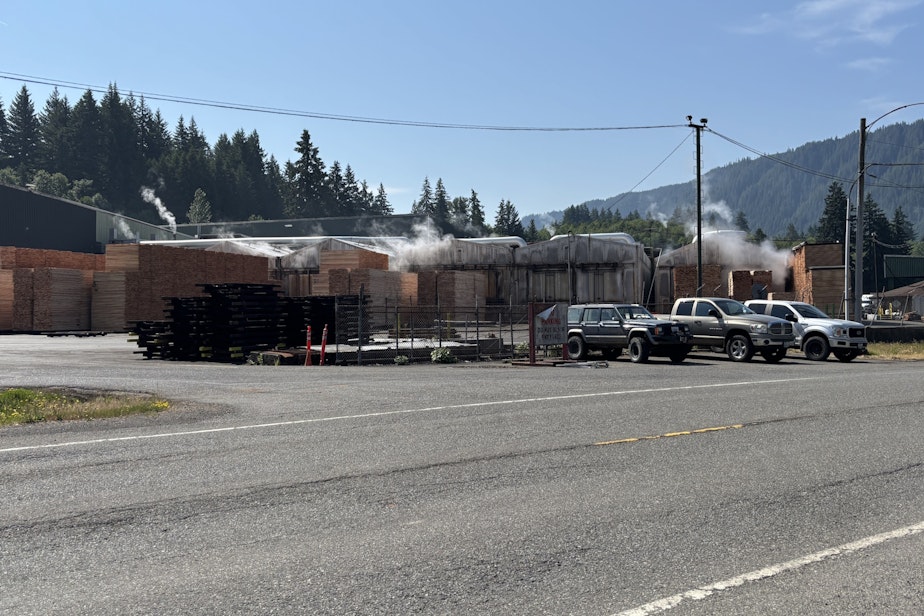
The loss has been devastating to rural communities built around those sawmills, like Morton, Washington.
Morton lies about an hour’s drive southeast from Seattle. It’s a sleepy little town, with a population of just over 1,000, and a big wooden statue of a lumberjack as you drive in.
Sponsored
But back in the 1950s, it was known as the “railroad tie capital of the world.”
The Hampton Mill is still the economic heart of the community today. It's survived the waves of closures over the years.
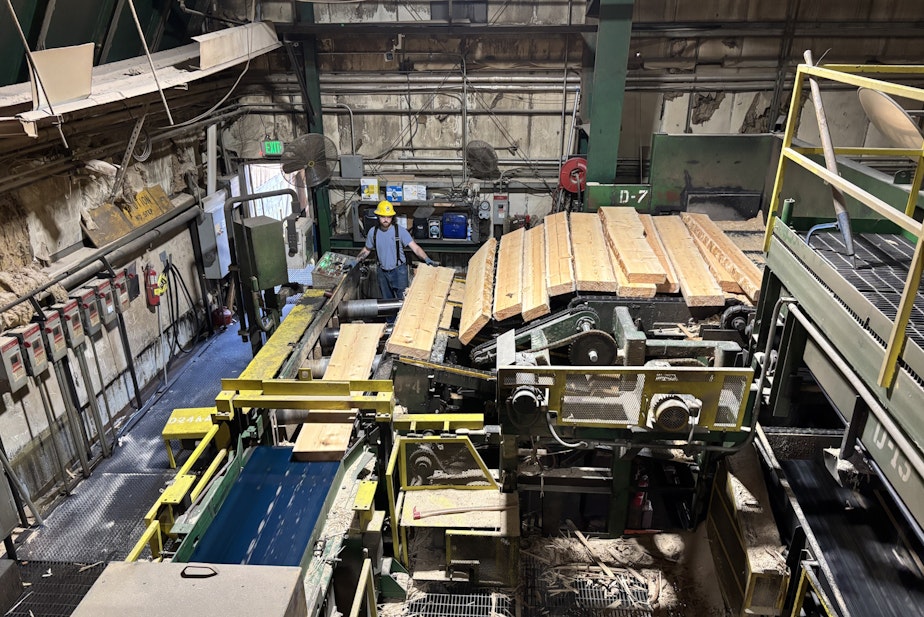
Inside, the first thing that hits you is the strong, sappy smell of freshly cut wood. The mill itself is like a giant machine. It looks highly automated, with just a few dozen people managing it all. Back in the old days, there would have been a lot more people doing these jobs.
Today, this mill produces enough lumber each day to frame 70 houses. You see logs in all stages of being cut apart, flying around on conveyor belts.
Sponsored
Some chutes carry the wood like a log ride at the fair. Once they're cut down to studs, it becomes more like a really fast merry-go-round. It feels a little like a carnival — one where it's easy to get your fingers cut off.
“ Obviously, keep your hands inside the rides at all times,” warned mill manager Aaron Poquette.
The saws are incredible. Circular saws slice through two-to-three-foot diameter logs in seconds. There are spiral grinders that strip bark, leaving barber pole stripes. And long ribbon-shaped saws that spin in a continuous loop.
After the logs are sawn to size, they're stacked, dried in a kiln, and sent out to lumber yards and home depots.
Sponsored
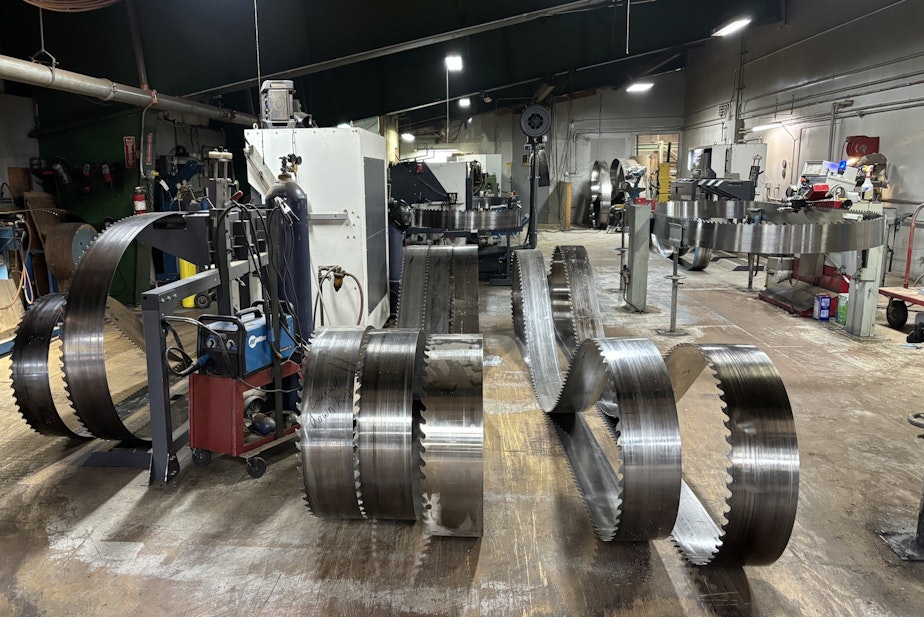
So, why has the timber industry here declined so much?
Mill manager Aaron Poquette highlighted a few key things.
First, it's become more difficult to harvest timber from public lands. The timber wars of the 1980s and '90s — and efforts to protect wildlife, like the spotted owl — put restrictions on how much forest land can be cut down.
“The harvest volumes that come off the national forest right in our backyard are nowhere near what they were in the '80s and early '90s, not even close," Poquette said. "We have this huge timber base right in our backyard. That timber base is gone. I mean, the timber's still there, but we're just not taking the harvest.”
Sponsored
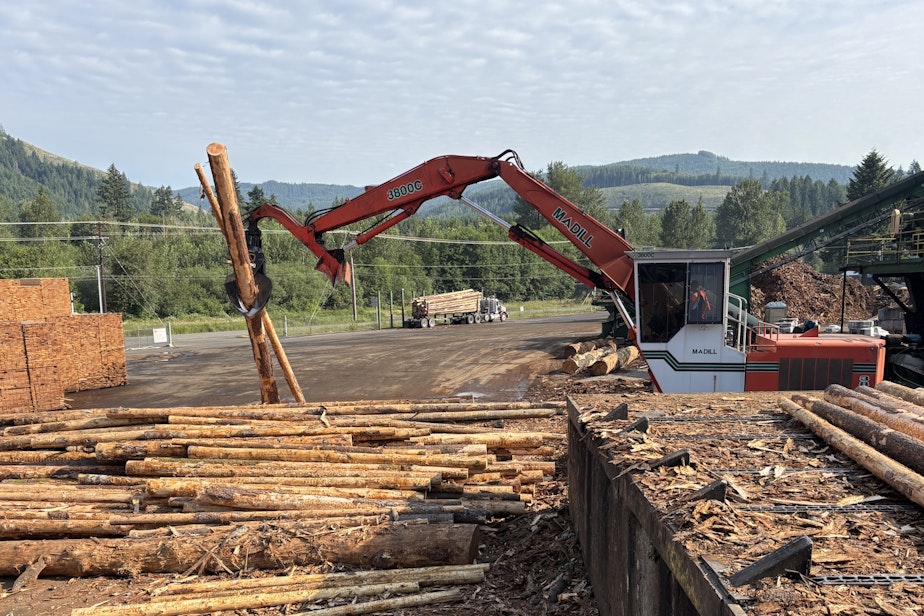
There have been other changes, too, like higher labor costs, industry consolidation, and changes in who owns private forest land.
“It's been hard, but we're still going to keep fighting through it,” Poquette said.
Plus, lumber from Canada is so much cheaper — because of its vast timber lands and the Canadian government’s involvement in setting prices on its lumber. The U.S. currently imports a third of its wood from Canada.
There's a lot for small communities to gain by bringing back sawmill jobs. They’re good jobs in rural communities, where jobs like that are hard to come by.

Dennis Barnes, a mill worker in Morton who plans to retire soon, is in favor of increasing timber jobs.
He started as an entry level worker, but now, he’s in charge of quality control. He monitors a huge computer system that keeps track of every single board as it moves through the mill. He plans out maintenance schedules for the saws, some of which must be sharpened several times a day.
"It's been a good job," he said. "I've been here 26 years. Lots of change. We've had some rough times, but, overall, it's supported my family, and it's been a good living.”
Barnes' career path illustrates how, over time, mill jobs are becoming more highly skilled and valuable. Now, with AI technologies entering the mill, doing things like visually grading the quality of each board, that transition continues.
Manager Aaron Poquette says it's difficult to convince workers to move or commute to Morton, so his company has been training existing entry level workers for those more technical jobs.
At the end of his career, Dennis Barnes has a nice 401(k), and plans to stick around Morton after retiring.
"I've lived here all my life and I plan on staying here," he said.
The economies of small towns like Morton depend on mill jobs. Over the decades, Morton has already lost half of its timber jobs, and people there don’t want to lose any more.
At the same time, many small rural communities also depend on tourism, tied to the area's natural beauty. But that industry could be harmed by more logging.
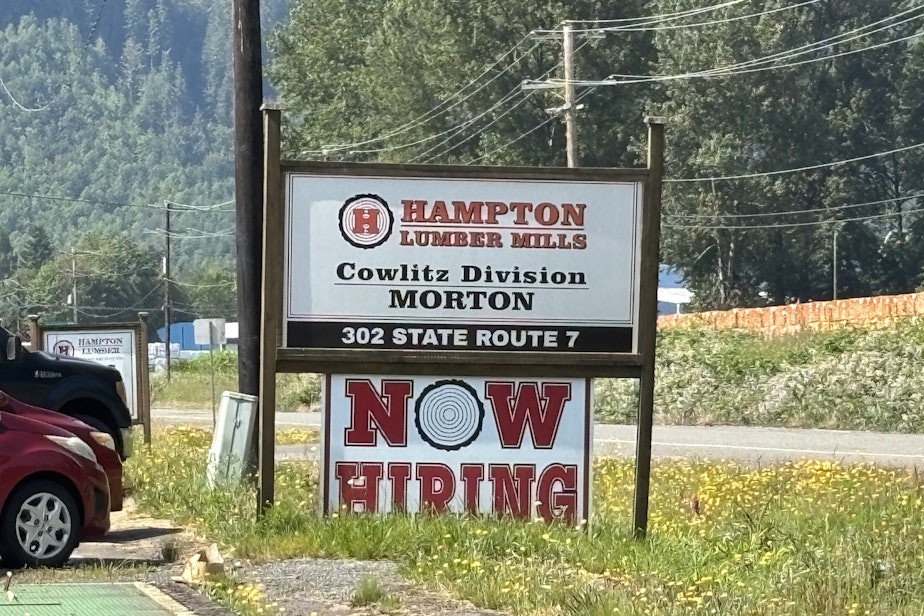
In some ways, this feels like a very Pacific Northwest story — it involves lumberjacks, after all. But in others, it’s a story playing out in rural communities across the country.
Industrial jobs used to anchor them, and now that the anchor is gone, a lot of these towns are adrift. It’s a story that’s driving the political moment right now.
And when small towns lose mills, it’s not just the jobs that go away. It’s the whole infrastructure for producing wood products. Without that production capacity, it makes us reliant on non-local sources of all the wood products we need. And we need a lot of them.
Seattle is a city built out of wood. It’s hidden in the walls of our homes and apartment buildings. It’s in the paper we use and the particle board in our furniture. Without this industry, Seattle and other cities like it would have to import a lot of those things from somewhere else.
In many ways it’s about self-sufficiency. Mill operators say the Northwest has this valuable local resource that we could be managing, using, and selling with good local jobs.
Or, we can pay other people in other places to import the same resource — and those people might not have the same values we have in terms of protecting the environment.
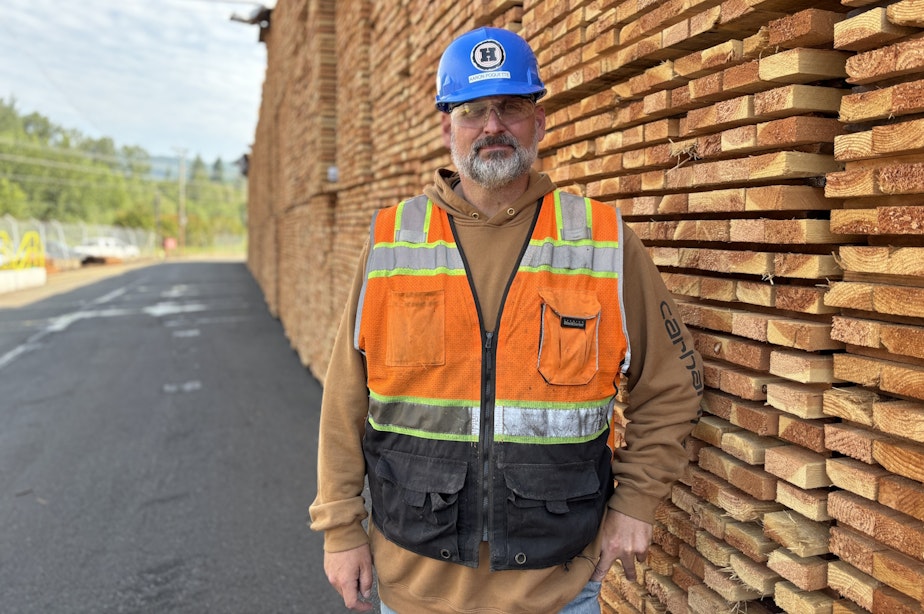
Blue collar sawmill jobs seem like exactly the type of thing President Trump wants to bring back. So, what's his plan? Three things:
- Tariffs on Canadian lumber are at about 15% now, and could double in August. That would raise prices on Canadian lumber and might make domestic lumber more competitive.
- Trump wants to open up more federal lands to timber harvest. He wants to harvest 25% more trees. That could mean less habitat for endangered species, and more logging around places where people hike and camp. Increasing that supply helps sawmills stay open.
- Trump has also been trying to make it much easier to build logging roads in remote forests, where road building is heavily regulated right now. Roads contribute to erosion and landslides, but they make more logging possible.
The strategy behind these moves appear to be: Increase the supply of timber for these mills, so they can turn it into more forest products, hire more workers, and make U.S. lumber a more competitive product for builders here.
But do the experts think it will work?
Most say opening up more forest land will definitely help, since supply constraints are one of their biggest problems and has led to the closure of many sawmills.
But forestry experts like Austin Himes at Washington State University warn that Trump’s plan doesn't address many of the industry’s core problems, especially for smaller lumber mill towns like Morton.
“This could present an opportunity of kind of throwing a lifeline, particularly for some of those less efficient, smaller mills that are out there," Himes said. "But it's probably not a permanent lifeline."
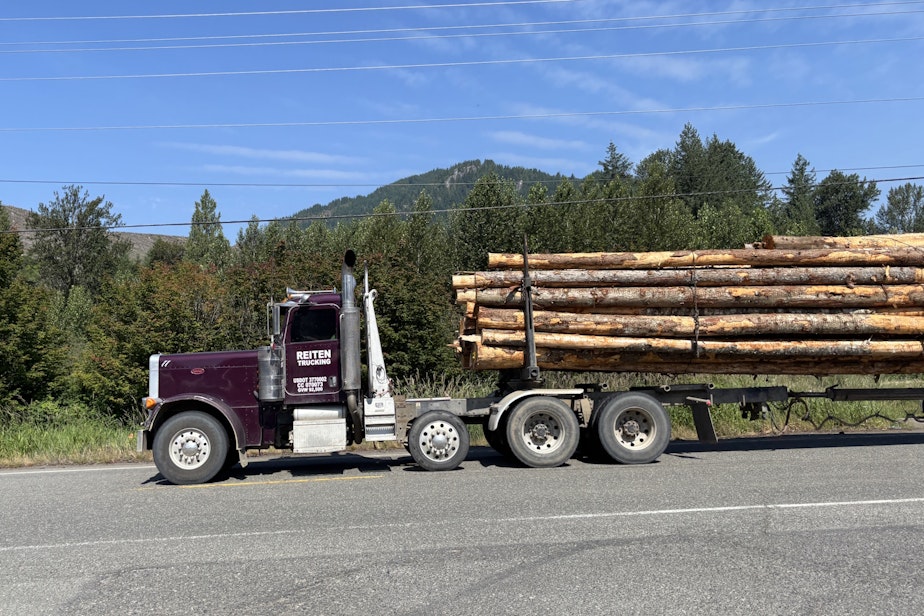
The first core, unaddressed problem is the way we manage our forests. Mill towns need a steady supply of logs over generations — not a big surge from a massive clear cut, followed by a dry spell.
Clear-cuts like that used to be the norm. Today, what mills say they need is a forest that operates like a farm — one that’s sustainably harvested, so it can provide a consistent supply. Think of a quilt of forest lands, where each square contains trees of a different age, or of forests that are thinned more gradually — which could also help prevent wildfires.
There’s not much in the president’s plan to suggest a focus on that kind of long-term planning.
“ What we're going to see, I suspect, are areas that are hit particularly hard by very intensive harvesting practices that lead more to sort of lose-lose situations for communities who enjoy those forests and the ecological sustainability of those forests," Himes said. "And we'll only probably have marginal benefits in terms of revitalizing jobs.”
A second core problem that the Trump plan doesn’t address is the unpredictability of tariffs.
KUOW's Booming has reported on the challenges businesses have responding to unpredictable tariffs — and it's the same with the lumber industry.
Timber companies plan 40 to 50 years in advance, because it takes a long time to grow trees. A short-lived tariff isn’t going to convince lumber companies to build new mills in places like Morton.
“Those are going to be hundreds of millions of dollar investments," Himes said. "Huge, huge, huge, upfront capital investment that's only going to be recovered over probably decades.”
RELATED: How to avoid being tariffed out of business
And the last unaddressed thing that could make Washington's timber industry more effective is modernization
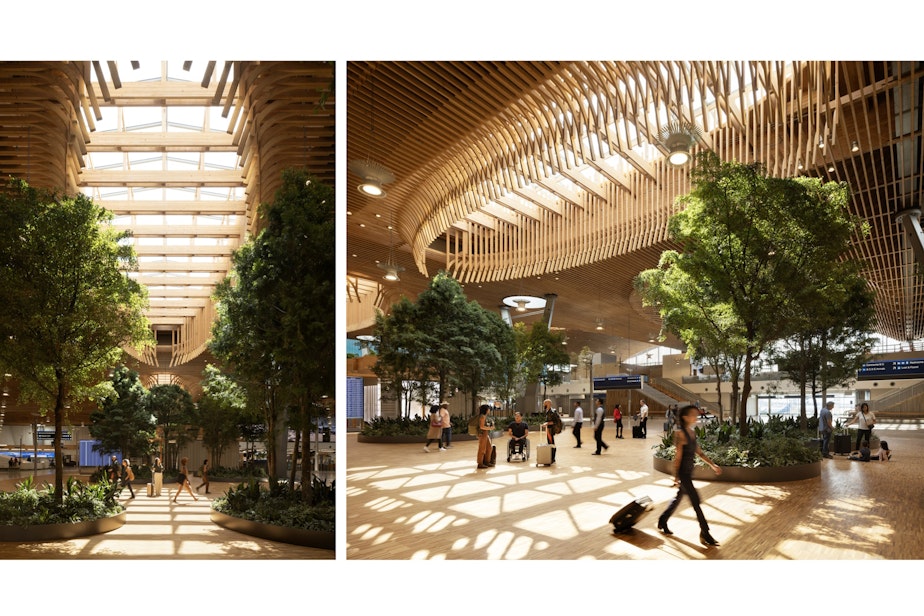
Anybody can cut two-by-fours, but there are more valuable products that would help Washington wood stand above Canadian competition.
The federal government could help that happen by investing in research.
One example: New engineered wood flooring products and huge mass-timber beams, such as those used in the Portland airport's new main terminal. These things aren’t created from huge trees, but from smaller tree parts pressed together. That would mean we could use every part of the tree.
It turns out, you can spin trees fibers (lignin) into super light, strong material, similar to carbon fiber material.
Carbon fiber is usually made from fossil fuels, so wood is more sustainable. The product could go into everything from bicycles to airplanes.
Or, take sawdust. It can be fermented to produce ethanol, which goes into fuel.
Hear more on Booming, KUOW's podcast about the economic forces shaping our lives here in the Pacific Northwest.




